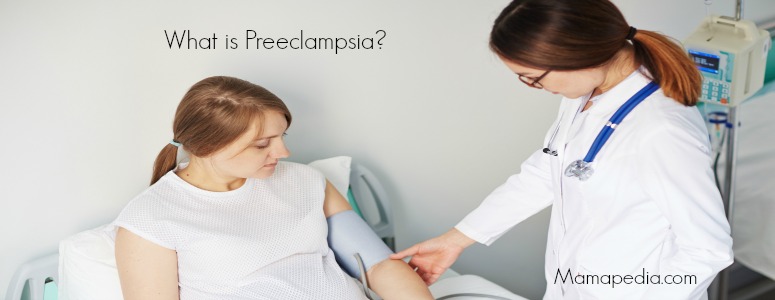
What is Preeclampsia?
Preeclampsia is just one of a million things that you probably never thought about before getting pregnant. It’s a condition that only affects pregnant women, and is cured by delivery. But what if it happens to you, and how will you know it’s happening? We talked to Dr. Sheila Chhutani, a board-certified OB/GYN in Dallas, Texas, about what expectant parents need to know.
The Basics
Preeclampsia is a condition characterized by an increase in blood pressure and the presence of protein in the urine. Its exact cause is still unknown, although some research suggests that it has to do with proteins created by the placenta. The condition affects at least 5-8% of pregnancies, according to the Preeclampsia Foundation.
Doctors carefully monitor pregnant women for the condition, because it has dangerous implications. “Risks to the mother include damage to her kidneys and/or liver, stroke, seizure, pulmonary edema, cardiac failure and bleeding caused by decreased platelets, which aid in clotting,” Dr. Chhutani explains. “Risks to the fetus include growth restriction and complications of prematurity if preeclampsia occurs before 34 weeks.”
Will I Develop Preeclampsia?
Because the condition doesn’t have a proven cause, it’s hard to say who will develop it. However, Dr. Chhutani says that some groups are most at risk. “It is most commonly seen in first pregnancies, extremes of age (teens and women in their late 30 or 40s), African-American women, [women with] multiple gestation, those with a history of hypertension, lupus or diabetes prior to pregnancy, and those with a family or personal history of preeclampsia.”
How Will I Know?
“Typically [preeclampsia] will occur in the late third trimester,” says Dr. Chhutani, but it does sometimes develop during a woman’s second trimester. Your OB should monitor your blood pressure and test your urine for protein at every visit, so speak up if you aren’t being given these tests.
The symptoms of preeclampsia can be tricky to spot, because they often mimic other symptoms of normal pregnancy. Call your doctor immediately if you experience persistent headaches, excessive swelling, an increase in vomiting and nausea during the second or third trimester, or visual changes like spots or blindness.
What Happens Next?
If your doctor diagnoses you with preeclampsia, the stage of your pregnancy will dictate your treatment. “If you’re late preterm (34 weeks) or full term (beyond 37 weeks), the treatment is delivery,” says Dr. Chhutani. “You will be put on a medicine called magnesium during labor and for 24 hours post delivery, to decrease the chance of having a seizure, which is [called] eclampsia. You may or may not need to be on blood pressure medication for weeks after delivery until your body gets back to normal.”
“If preeclampsia occurs during the second trimester,” she notes, “there is a balancing act between making sure the baby develops and the health of the mother.” A woman who develops preeclampsia before 34 weeks gestation will often be hospitalized to give the baby more time to mature, unless her health is in immediate danger.
It’s worth noting that this condition doesn’t disqualify you from having a vaginal delivery. “A diagnosis of preeclampsia does not mean a woman automatically gets delivered by cesarean delivery,” says Dr. Chhutani.
Kathryn Walsh is a freelance writer specializing in parenting and travel topics. Her work has appeared on mom.me, TheBump.com, and USAToday.com.